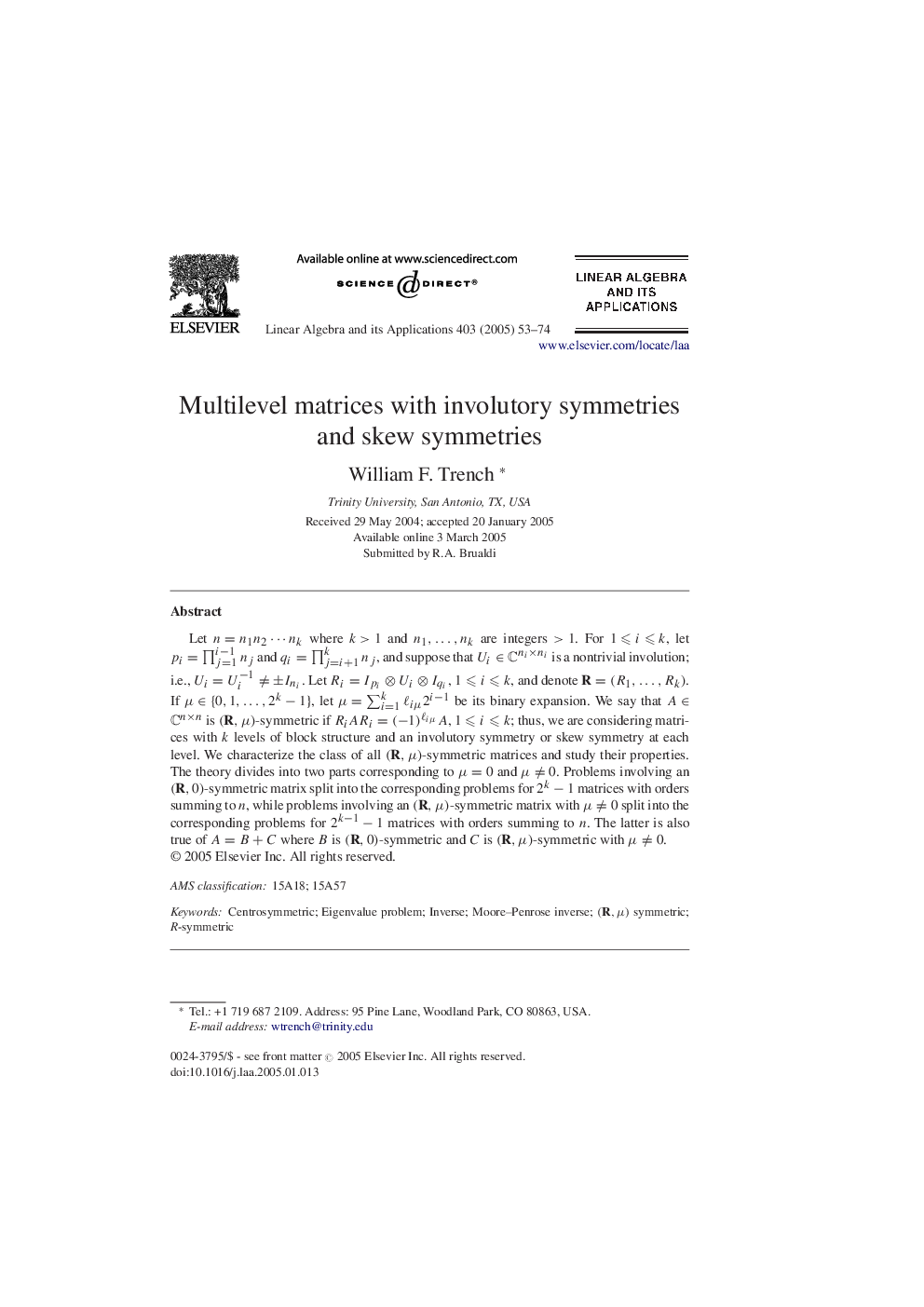| Article ID | Journal | Published Year | Pages | File Type |
|---|---|---|---|---|
| 9498281 | Linear Algebra and its Applications | 2005 | 22 Pages |
Abstract
Let n = n1n2 â¯Â nk where k > 1 and n1, â¦Â , nk are integers >1. For 1 ⩽ i ⩽ k, let pi=âj=1i-1nj and qi=âj=i+1knj, and suppose that UiâCniÃni is a nontrivial involution; i.e., Ui=Ui-1â ±Ini. Let Ri=IpiâUiâIqi, 1 ⩽ i ⩽ k, and denote R = (R1, â¦Â , Rk). If μ â { 0, 1, lâ¦Â , 2kâ1}, let μ=âi=1kâiμ2i-1 be its binary expansion. We say that AâCnÃn is (R, μ)-symmetric if RiARi=(-1)âiμA, 1 ⩽ i ⩽ k; thus, we are considering matrices with k levels of block structure and an involutory symmetry or skew symmetry at each level. We characterize the class of all (R, μ)-symmetric matrices and study their properties. The theory divides into two parts corresponding to μ = 0 and μ â  0. Problems involving an (R, 0)-symmetric matrix split into the corresponding problems for 2kâ1 matrices with orders summing to n, while problems involving an (R, μ)-symmetric matrix with μ â  0 split into the corresponding problems for 2kâ1â1 matrices with orders summing to n. The latter is also true of A = B + C where B is (R, 0)-symmetric and C is R, μ)-symmetric with μ â  0.
Related Topics
Physical Sciences and Engineering
Mathematics
Algebra and Number Theory
Authors
William F. Trench,
